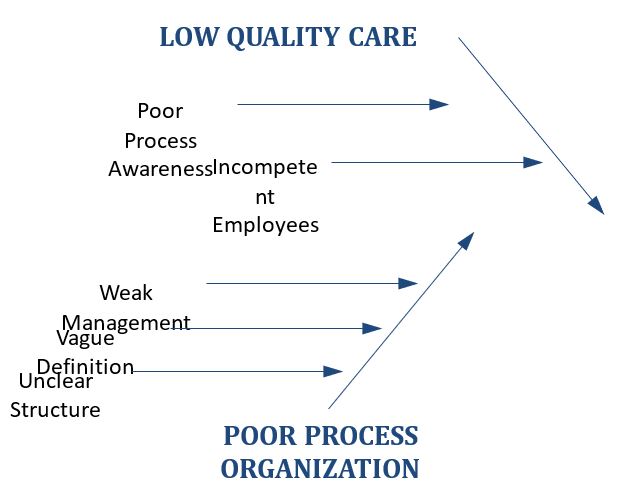Clinical Microsystem Assessment
This paper aims at conducting a clinical microsystem analysis at XYZ hospital microsystem located in New York, NY, focusing on outpatient care settings. Clinical Microsystem Assessment Tool (CMAT) will be used to determine the key characteristics of the identified microsystem (“About us”, n.d.). It is essential to pinpoint that leadership in this organization strives to ensure a balance between achieving performance goals and providing support to employees (see Clinical Microsystem Assessment Tool document in attachments). However, organizational support is insufficient, and it seems that employees receive poor information regarding their performance characteristics and improvement. At the same time, CMAT indicates that many staff members fail to provide patient-centered care even though they try to work in a team. As for performance results, it should be noted that only some basic information is collected. The resources are usually unavailable to staff members, while those that are available are difficult to use in practice. Along with required data, technology is also difficult to access. In turn, patients have some access to standard data, yet they are not asked to provide feedback or select a way of information receiving.
Reviewing current performance metrics, the above organization may be assessed as follows in terms of 5 P:
- Purpose. The organization’s mission is to provide patients with high-quality care through continuous improvement and evidence-based practice.
- Patients. Primary care practice patient viewpoint survey, access survey, and assessment of care for chronic conditions review illustrate that patient satisfaction is low.
- Professionals. According to the primary care staff satisfaction survey and personal skills assessment, many professionals lack improvement and interpersonal skills, while several of them would not recommend the given workplace to their colleagues (Melnyk & Fineout-Overholt, 2011).
- Processes. This issue is not clearly defined at XYZ hospital since many specialists fail to answer some questions regarding organizational aspects.
- Patterns. In general, the staff is aware of patterns of unplanned activities.
Theme, Aims, and Charts
Theme: enhancement of processes, patient satisfaction, and professionals in outpatient care in terms of a patient-centered approach (“The IHI triple aim,” n.d.).
Global aim: the improvement of professionals’ awareness of processes in outpatient care such as diagnostic testing, phone advice, and patient education at XYZ hospital (see Appendix A for details) (“Knowledge center,” n.d.). The process begins with the education and training of professionals and ends with increased staff knowledge and skills regarding the mentioned areas. By working on the process, it is expected to improve processes and their proper implementation and monitoring, increase patient satisfaction, and achieve better health care outcomes. It is essential to work on this now as the ever-changing environment and patient needs require constant improvement, staff needs relevant training to remain competent, and evidence-based practice opens new perspectives in the field of health care (Harris, Roussel, Thomas, & Dearman, 2015). Taken together, the above benefits would help the given hospital to advance its outpatient care, so that patients may receive more qualified health care services and improve their health outcomes (U. S. Department of Health and Human Services Health Resources and Services Administration, n.d.). The following process flowchart represents the identified aim, process, and advantages (Chart 1):

Specific aim statement: it is expected to improve quality of health care processes from low to a high quality (by 30 percent) by December 20, 2018.
In order to understand the causes of the low patient satisfaction, it is appropriate to utilize Cause and Effect – Fishbone Diagram (see Chart 2 for details).

References
About us. (n.d.). Web.
Harris, J. L., Roussel, L., Thomas, P. L., & Dearman, C. (Eds.). (2015). Project planning & management: A guide for nurses and interprofessional teams. New York, NY: Jones & Bartlett Publishers.
The IHI triple aim. (n.d.). Web.
Knowledge center. (n.d.). Web.
Melnyk, B. M., & Fineout-Overholt, E. (Eds.). (2011). Evidence-based practice in nursing & healthcare: A guide to best practice. Philadelphia, PA: Lippincott Williams & Wilkins.
U. S. Department of Health and Human Services Health Resources and Services Administration. (n.d.). Readiness assessment & developing project aims.
